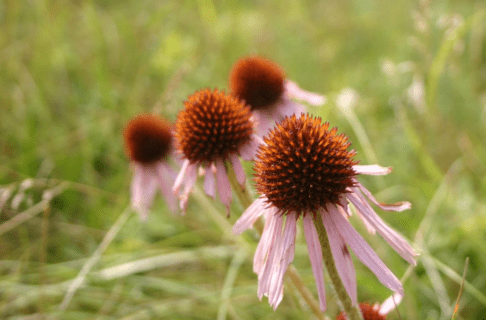Posted on: Monday March 5, 2018
Most of the plants in the Museums’ dioramas are real plants that have been preserved and often painted. However, in some cases the preserved plants can simply not be used. This is especially true if the diorama is set in spring (e.g. wolf diorama in the Boreal Forest Gallery) or summer (e.g. bog diorama in the Boreal Forest gallery). In such cases, we make our own plants.
The process required to create a realistic fake plant is a long and laborious one. The first step is to actually obtain a real, live plant of the species that you want to reproduce. First off, a location as close to the Museum as possible that contains the species required is identified. Then, landowner permission or government collecting permits are obtained. When the plant is at the right stage of flowering, a field trip to collect it is planned, usually first thing in the morning. An appropriately sized plant is chosen, and photographs and notes on the colour are taken. Then, the entire plant, along with a good chunk of sod, is dug out, placed in a bucket, watered to keep it from wilting too much, and driven to the Museum. This is the phase of the project that I, as the Curator, are typically involved with.
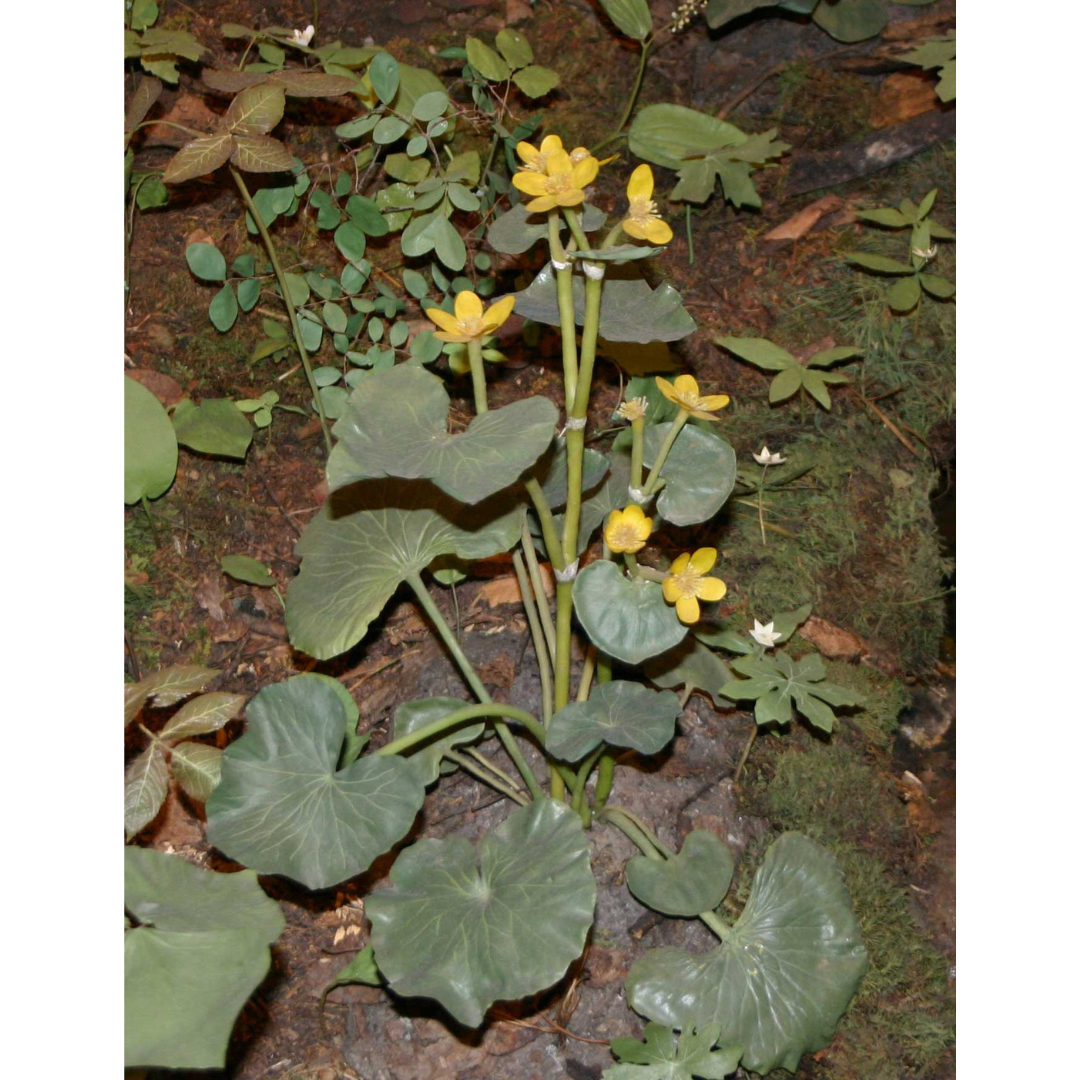
This marsh marigold (Caltha palustris) in the wolf diorama is completely fake.
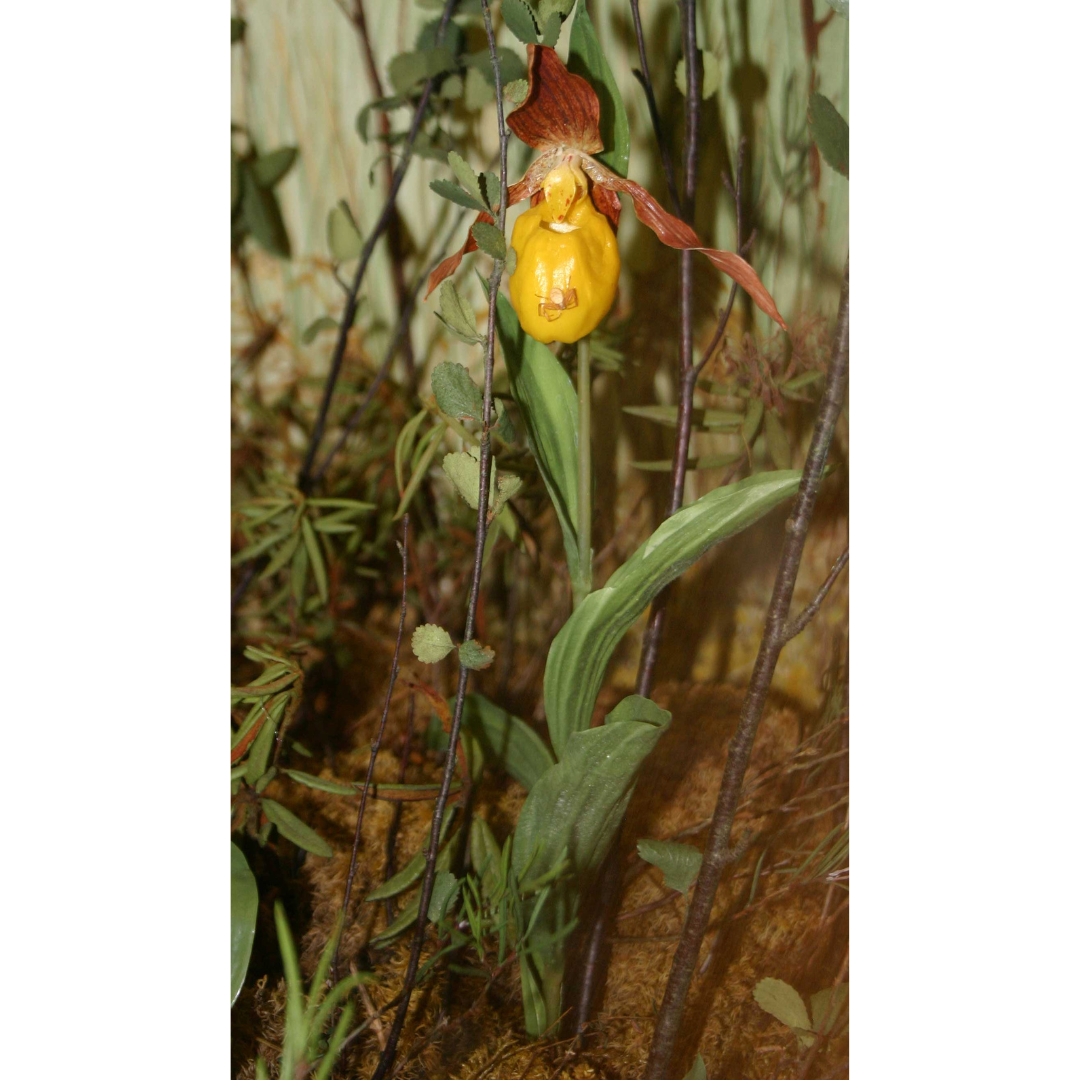
Models like this yellow lady’s slipper (Cypripedium calceolus) are made by taking molds of real plant parts.
The remainder of the work is now with the Diorama Artist. She removes each part of the plant and makes molds of them. Then the molds are used to create fake leaves, stems and flowers or fruits. The fake parts must all be painted to the correct colour and then attached together using glue and wire in the correct way. It’s kind of like building a complex 3D puzzle. When the model is complete it is almost indistinguishable from a real one. I’d love to do a field trip where I would place the model in a real ecosystem and then see if anyone could actually find it. I’m pretty sure the Diorama Artist would kill me if I did that though (what if we couldn’t find it again!). Right now, several completed plant models are waiting in storage or on temporary display, for eventual installation in our new exhibits.
The mini dioramas in the Museum are even more challenging than the full scale ones because you can’t use real plants in the same way. Although real branches are used for the trees, they have to be coated with wax, carved and painted to look like a real tree in miniature. Creating leaves and branches is even more difficult. In the Duck Bay mini diorama in the Parklands Gallery, the Diorama Artist used stair-step moss (Hylocomnium) as the branches of spruce (Picea glauca) trees. Baby’s breath (Gypsophila), a non-native plant used extensively in the cut flower industry, was used to create the leaves of the deciduous trees and the shrubs along the forest floor.
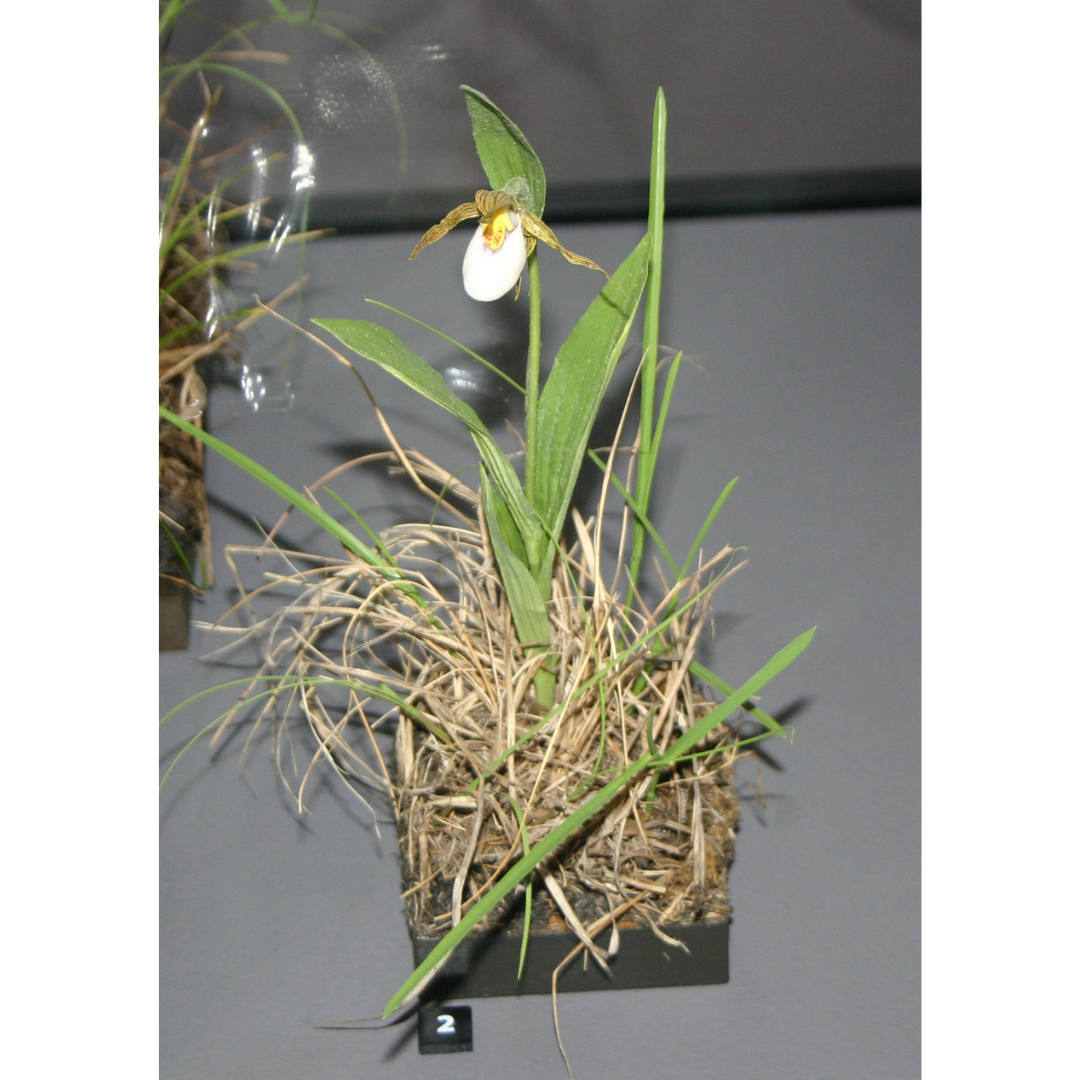
This Small White Lady’s-slipper (Cypripedium candidum) model is on temporary display until a new exhibit case is ready.
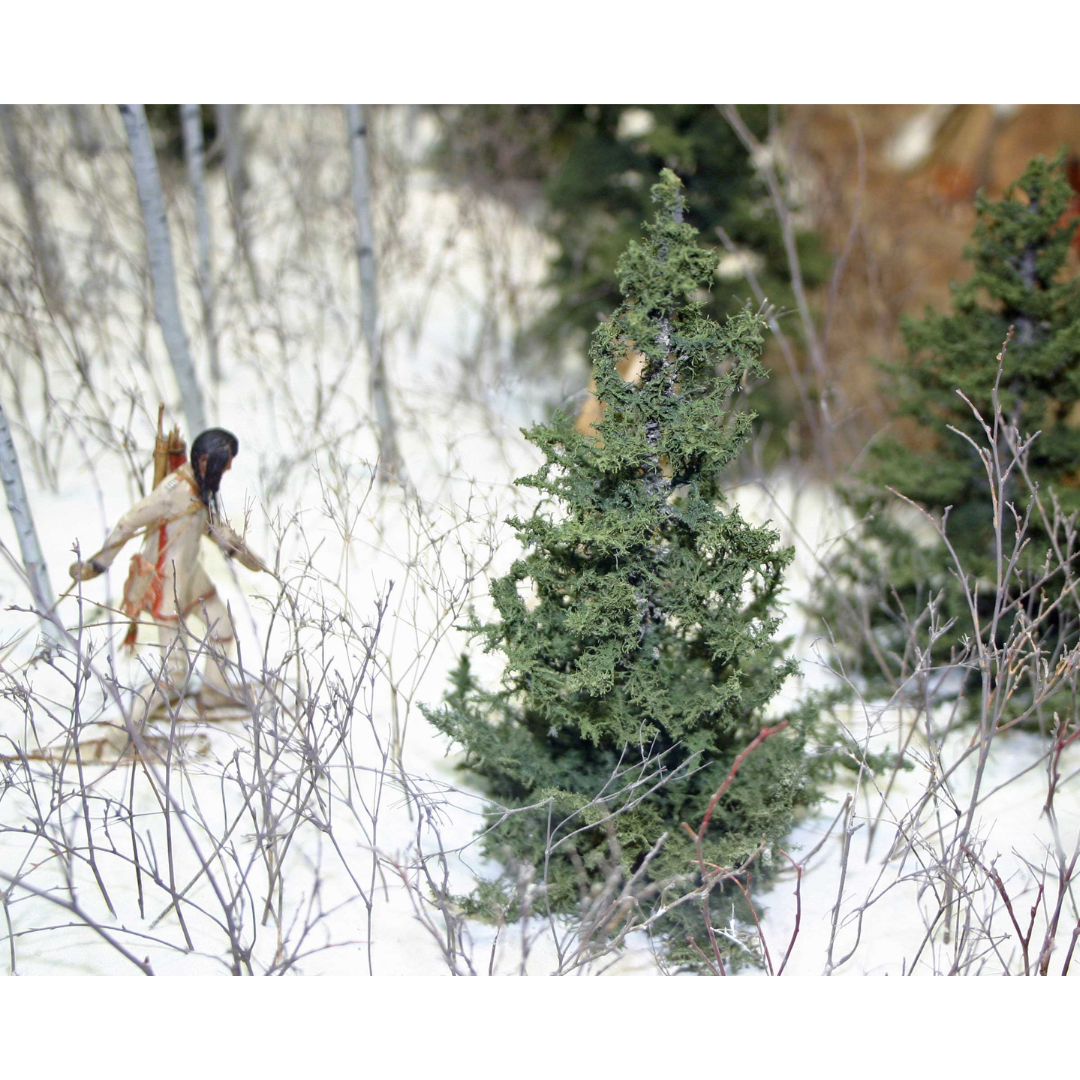
Moss and tree branches were used to make these mini-trees in the Duck Bay diorama.
The Manitoba Museum prides itself on the quality of our dioramas. Every time I look at them I see some new detail that I never saw before. The next time you come to the Museum, pay close attention to the plants in the dioramas and see if you can tell, what’s real and what’s not. You will gain a new appreciation of the talent and patience of our dedicated team of staff and volunteers.




